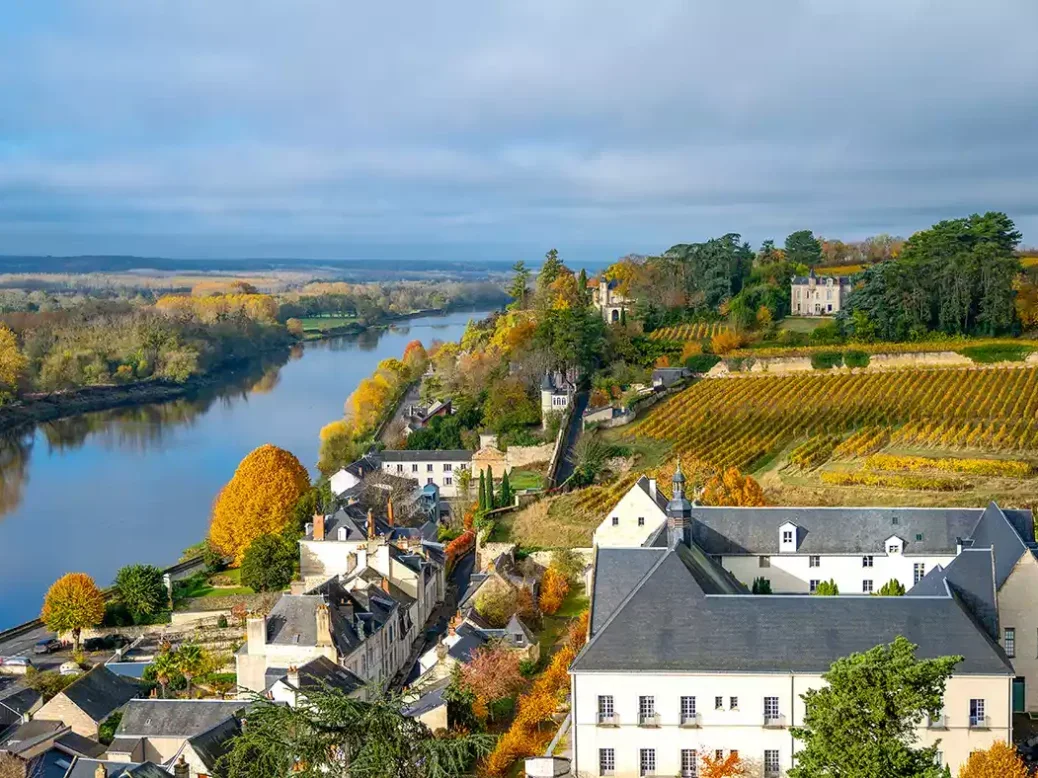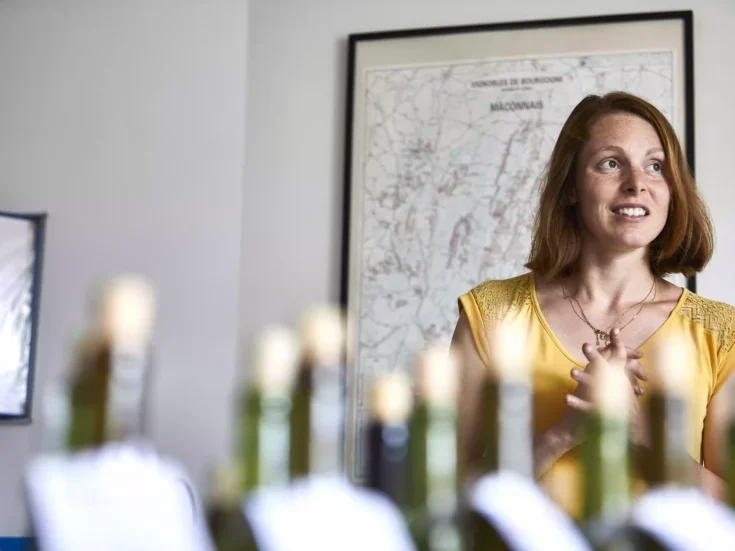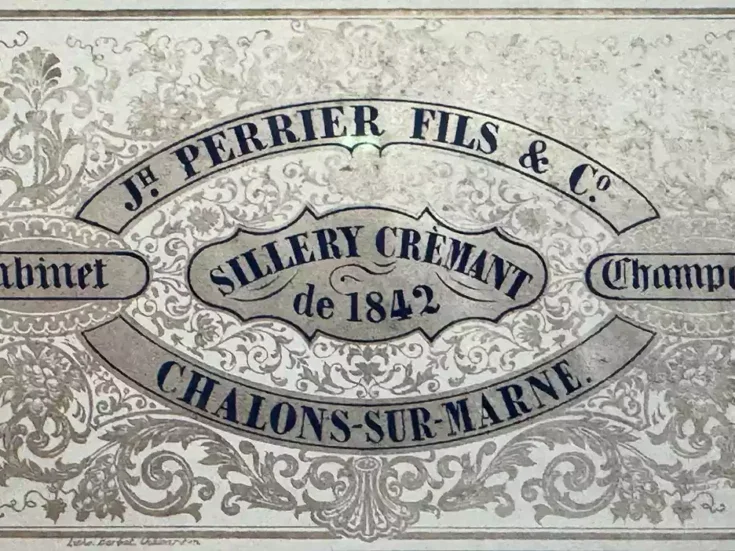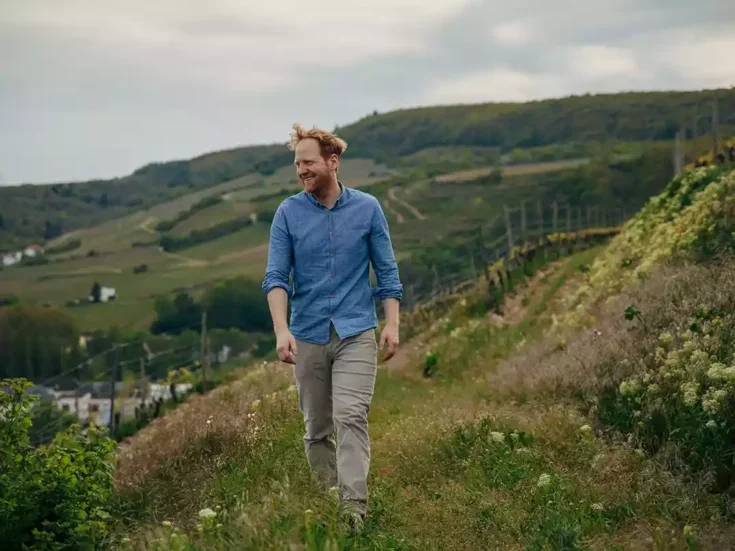
A grape variety that has become increasingly popular with growers and drinkers for its ability to retain freshness in a warming world, Cabernet Franc is proving itself capable of great stylistic variation, says David Williams.
The nature of ripeness has been one of the more contested fields of wine aesthetics in recent years—and no grape variety better embodies the difficulties inherent in defining this most elusive and evanescent of concepts than Cabernet Franc. As a variety, we come to it with a fair amount of baggage and preconceived ideas; with their sketches of pencil shavings and green capsicum alongside summer berries and currants in muted shades of red and purple, all those charmingly illustrated tasting guides have taught us what to expect from Cabernet Sauvignon’s (and Merlot’s and Carmenère’s) parent, while wine textbooks continue sternly to inform their readers of the difficulties of consistently getting full ripeness from vintage to vintage, and the risks of pervasive herbaceousness, grippy tannins, and searing acidity in the too-frequent too-cool years.
Of course, these portraits of Cabernet Franc are for the most part inspired by settled ideas about its performance in the region where it has the longest tradition of being cultivated for varietal wines—the Loire, and specifically the quartet of appellations in Anjou and Touraine: Bourgueil, St-Nicolas de Bourgueil, Chinon, and Saumur-Champigny. Even today, when (as this tasting demonstrated) the variety has become the increasingly successful solo ingredient in wines produced in numerous regions around the world, the Loire dominates varietal Cabernet Franc production; the valley’s circa 16,000ha (39,500-acre) total plantings amount to just over one third of the globe’s total, putting it on a par with Bordeaux, where Cabernet Franc comes some way down the pecking order. (It’s the third most planted red variety but has less than 10% of the total red vineyard.)
Even within the Loire, however, the characterization of Cabernet Franc as essentially green—of forever struggling to get “properly ripe” in all but the very best (warmest) vintages—has long been contested by growers and merchants. In the early 2000s, when the Loire was still considered to be at the northernmost limit of viable European red-wine production, I can remember being gently upbraided by the British Loire specialist importer/courtier Charles Sydney at the local trade fair, the Salon des Vins de Loire in Agners, when I suggested that Loire Cabernet Franc was particularly susceptible to extremes of vintage variation: Not if you know how to work with it, he said, pointing to what he believed was the impeccable consistency of his own portfolio of growers. I seem to remember Sydney giving similarly short shrift to my contention that climate change was likely to have a positive impact on the style and reliability of Loire Cab Franc, too: The best growers are already there, he told me.
In the context of a wine world Zeitgeist that had shifted, in the dog days of Parkerization, to an understanding of ripeness based on grapes pushed to the outer limits of sugar accumulation and hang-time, Sydney’s, and his growers’, views were not widely shared outside the region. Their conception of “ripeness”—of the precise quantities of green flavor and acidity and the acceptable levels of sap and crunch in the tannins—was still at odds with the prevailing view, to the extent that Loire growers were not infrequently diagnosed in some quarters with an acute form of cellar palate. Some 20 years later, of course, the paradigm has shifted completely, with the classic Loire style now being a kind of sommelier ideal of acid-driven red wines. During my most recent visit to Chinon in late 2021, the question of underripeness never once came up. To a man and woman, the growers I spoke to were instead intensely preoccupied with the question of how much longer they might be able to make wines that retain the currently fashionable sap and snap and high-acid freshness of their version of Cabernet Franc in summer temperatures that now consistently top 104°F (40°C).
Warming to Cabernet Franc
The Loire’s winemakers are of course far from alone in expressing these sorts of concerns. And it is in the hope of adding some of that elusive vitality, lift, and freshness in ever-hotter vintages that so many producers of Bordeaux and Bordeaux-style wines have turned to Cabernet Franc in recent years. As my fellow panelist on this tasting Anthony Rose explains, “Cabernet Franc is well suited to cooler, inland climates and ripens earlier than Cabernet Sauvignon. As climate change produces bigger reds from Cabernet Sauvignon and Merlot, Cabernet Franc has the potential to become a savior if used in higher proportions in blends or on its own to satisfy a growing demand for wines with sugar levels lower at phenolic ripeness, and consequently lower alcohol, than its Bordeaux varietal counterparts.”
But while this cosmopolitan tasting—which featured wines from Argentina, Australia, California, Virginia, Chile, and South Africa, as well as the Loire and Bordeaux, that were liked and highly scored by at least one of the panel—offered ample evidence of Cabernet Franc’s adaptability, with a far more variegated or multicolored view of global Cabernet Franc than I had anticipated, the most striking observation shared by the panel was what Simon Field MW called the “evident diaspora between the wines from the Loire […] and those from everywhere else, other French regions included.”
Depending on how you weight them, our scores suggested a fairly equal preference for the wines of the Loire and the more fulsome, richer styles produced elsewhere; the Loire scooped up six of the top 11 places but failed to place in the top 4, where Bordeaux, Napa, and Tuscany ruled the roost.
For my own part, however, I can see that there are traces of a residual prejudice for the Loire style—or at least a deep-seated sense that it is the only truly authentic expression of Cab Franc—when I claim I’m “not thinking about the variety” in my notes for my highest-scoring wine of the tasting (the sumptuous but divinely detailed Guinaudeau [Château Lafleur] Les Perrières Bordeaux Supérieur) or when I say it’s “hard to discern any varietal Cab Franc flavor” in my second-favorite wine (the impeccably stylish La Jota Vineyard Co Howell Mountain Cabernet Franc Napa Valley California USA 2019).
On reflection, and with more than a hint of l’esprit de l’escalier, this doesn’t seem quite right. What I had spotted was an “absence of Loire Cab Franc flavor,” not an absence of Cab Franc flavor tout court. In essence, what I was tasting and enjoying in these two magnificent wines was an expression of Cab Franc at different levels or types of ripeness. My fellow panelists and I will continue to cherish what Simon calls the “cool, high-in-acidity, aromatic, guileless” Loire style. But if nothing else, this tasting showed that Cabernet Franc is capable of making truly beautiful, articulate, always arrestingly fresh red wines in a far greater range of styles, conditions, and levels of ripeness than the evergreen caricature would suggest.
The top five: The best of global Cabernet Franc
Guinaudeau (Château Lafleur) Les Perrières Bordeaux Supérieur Bordeaux France 2019 (15% ABV) |96
SF | Ruby red, attractive and forthcoming; a nose of cigar box, soft earth, and spice, fruit discreet in the background; very composed, very attractive. On the palate, the fruit fans out beautifully, elegant, resourceful, and composed, its concentration almost concealed by an ethereal floral appeal. A very accomplished, satisfying, and impressive wine. | 95
AR | Dense and deep in youthful ruby, this is still brooding and youthful in aroma, lurking as if to pounce, yet there’s a sweet, spicy veneer and an energy about it that acts as a call to arms; this is wonderful fruit, dense and rich in taste and texture, and yet somehow effortless and elegant at the same time; the purity of the dark berry and cassis fruit shines through, oak adding a spicy veneer of texture and voluptuous charm, all underpinned by a remarkable freshness and energy for great balance. The sort of wine that restores your faith in Bordeaux, whether you can afford it or not. 2024–39. | 97
DW | Gorgeously inviting, with its deeply plush but intricately brocaded scents, and velvety, fine-grained tannins: Cab Franc energy and acidity and fragrance, for sure (red fruit curling around black), but this is not a wine in which you are thinking about the variety or the blend, rather the exceptional depth and refined, sensual, hedonistic quality. 2024–38. | 95
La Jota Vineyard Co Howell Mountain Cabernet Franc Napa Valley California USA 2019 (14.1% ABV) |95
SF | Rich, near-opaque color; onyx; a fine veneer. Nose of ripe bilberry, sloe, and cassis, hints of laurel and mint behind that; all primary, all buttressed by a ripe, self-confident texture; acidity and tannin both high and highly impressive. Fine balance and concentration; modern, demonstrative, but, all in all, very finely composed. A keeper. | 94
AR | A very deep, brooding, youthful red, this is very ripe and rich in aroma, with a plush underlay of vanilla oak; to taste, there’s a lot going on here, with plenty of mulberry fruit flavor, juicy and supple, all underpinned by a stylish, French-oak, spicy element; a detailed red combining all the elements of fruit, oak-spice, texture, and freshness in a really beautifully balanced, super-stylish wine that’s far too young at this point to drink, but given two to three years it will come into its own for a decade or even longer. You will want to cellar this, I promise you. 2024–35. | 95
DW | Dusky oak and real depth of dark fruit—a great deal of intensity, and hard to discern any Cab Franc varietal character—but the fruit is absolutely impeccable, the ample tannins very polished and fine, with a core of crème de cassis sparking a great deal of pleasure through a long, long finish. Exceptionally high-quality Napa red. 2024–32. | 95
Le Dôme St-Emilion Bordeaux France 2021 (13.5% ABV) |94
SF | Dense onyx color, with high-toast aromatics and a velvety, bitumen aromatic; bilberry plush; expense and indulgence before restraint and a sense of place. The floral character is compromised by the persuasive tannins; a masterclass in expensive winemaking, careless of the vagaries of a modest vintage, its progeny at the same time incredibly impressive and unerringly anonymous. A most attractive enigma. | 92
AR | Good, youthful, ruby hue; fine, fresh, yet ripe dark-fruit fragrance, with oak in the back seat, but an alluring fragrance that invites you in to taste; and when you do, this is a lovely wine, with a delicate sweetness of dark cassis fruit, whose density and texture linger for quite some time in the mouth, a tactile experience to be enjoyed thanks to some lovely, supple tannins, before the inevitable swallowing, or, in this instance, regrettable spitting. Still young, this looks to have a good decade’s life ahead of it yet. 2024–35. | 95
DW | The first of the Bordeaux flight, and an immediate change of gear and style which is, of course, a consequence of terroir, milieu, and the presence of another grape variety in the blend—even if here we are talking just a 20% portion of Merlot. Either way, we are immediately in a very different, but nonetheless beautiful, place, of luscious depth in which the characteristic Cab Franc fragrance still sings in a graphite and floral tone but over a plumper, fatter beat, with beautifully rendered, cedary oak and a ruffle of velvety tannin. 2024–38. | 94
Le Macchiole Paleo Tuscany Italy 2019 (14% ABV) |94
SF | Very complete color; ruby deferring to magenta and vermillion. The palate impresses equally, its savory notes enhanced by petrichor, wild mint, and a hint of verbena. Behind that, dark fruit and bitter chocolate, rosemary and smoked meat. A succulent, gastronomic allure completes the tableau, which depicts a more than happy alliance between grape variety and location, the first clearly welcomed in a hitherto relatively unfamiliar environment. Very exciting, very challenging. | 94
AR | Quite deep and youthful in color, just starting to shade toward garnet at the rim of the glass; there’s also a degree of evolution in the bouquet, which is rather lovely, full of fruit, light vanilla oak, and a beguiling sweetness, which are all nicely integrated as one; with its cassis flavors and polished French oak, it’s remarkably Bordeaux-like, but telltale signs of Italianate acidity and a slight bitter twist of tannin bring a distinct umami savoriness to what is a very good wine. 2024–31. | 93
DW | Beautifully harmonious but detailed nose of berries and currants; lushly appealing and seamless in the mouth, with a mass of fine tannins and a seasoning of sage and subtly salty, Mediterranean-breeze freshness. Very polished, insouciant, stylish, not a hair out of place. 2024–34. | 94
Charles Joguet Clos de la Dioterie (Monopole) Chinon Loire France 2019 (13.5% ABV; Organic) |93
SF | Ruby red, a bright and appealing color; the nose reveals dark fruit and spice, the workings of oak and, behind that, hints of bitumen and green tea. An attractive, impressionistic basket, in other words. These impressions are mirrored on the palate, the oak still in the ascendant, but with no lack of composure, concentration, or pixelated appeal. Food-friendly (the acidity is pronounced), yet with immediate appeal and the hallmarks of an impressive construction. | 92
AR | Good, vivid, youthful ruby for a 5-year-
old Cab Franc, this is pretty classic in aroma, with shades of herb overlaying ripe cherry fruit and underpinned by a light touch of oak; the cherryish fruit is refreshingly bright and vivid—remarkably youthful, in fact—with a distinct energy about it; while initial supple tannins (slightly drying on the finish) and stylish bring a dimension of texture to a really well-balanced, elegantly styled red. 2024–29. | 92
DW | A vin de plaisir with an ashamedly, flirtatiously gorgeous nose: a mix of crème de cassis and crème de mure, with violet notes and graphite: straight-up pleasure with an easy, graceful balance of fine, chalk-sprinkle tannins and racy, mineral-infused acidity gliding through the plump, polished fruit. A drinking-now delight with time on its side. 2024–34. | 94






